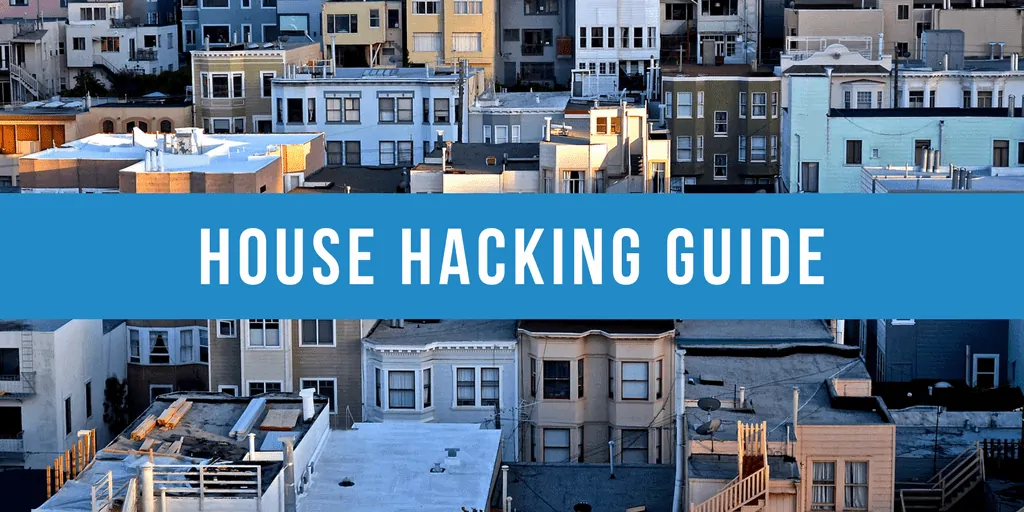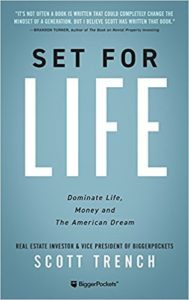
What if I told you that there was an easy, automatic, low risk, high-reward way to break into real estate investing?
What if I told you that you could buy a rental property with as little as 3.5% down, achieve a return of 100% or more per year, and do this with far less risk than your peers investing traditionally in rentals with 25% down?
You’re probably either interested, or you don’t believe me.
It’s called “house-hacking” and it’s how I started investing in real estate with just $20,000 in Denver, CO. This article will explain to you what house-hacking is, the math behind house-hacking, how house-hacking can be low-risk, and how house-hacking can accelerate the accumulation of a sizable rental portfolio.
What is House-Hacking?
House-hacking is the process of buying an investment property as an owner-occupant, moving into one of the units or bedrooms, and renting out the remainder of the property to some wonderful tenants that kindly pay down your mortgage.
For example, my first ever purchase was a $240,000 beat up, old duplex in an “up and coming” neighborhood in Denver, CO. I moved in, got the place livable, and began renting out the other unit to some tenants for $1,150 per month and the other bedroom in my unit to a roommate for $550 per month (total of $1700 in rent per month). My mortgage was $1,550 per month, so with that and the maintenance expenses and upkeep, my portion of the utilities, and the rest of it, I probably broke even. Part of the reason my mortgage payment was so high was due to the MIP (Mortgage Insurance Premium) I had to pay with my low down payment FHA loan.
I put down just $12,000 and probably sunk another $8,000 into the property over the next few months with repairs. I did much of the work myself and hired out some of the big projects to professionals.
And that was AWESOME. There I was, 24 years old, living completely rent and mortgage-free. My savings rate went through the roof! I lived in a pretty great spot–an easy 10-minute bike ride from downtown Denver, and was able to completely finance my housing with other people’s money.
The Math Behind House-Hacking
The math behind house-hacking can get a little bit absurd. Think about it, when you put down 3.5% or 5% on a property, you are leveraged 28.5:1 or 19:1, respectively.
In my case, with 5% down, every 1% appreciation results in a $2,400 gain or a 19% return on my $12,000 down payment! Same thing with loan amortization. Same thing with the rent, which I count as part of my return since I no longer have to pay it.
When you are playing with numbers that produce returns as ridiculously high as these, computing the ROI on a house-hack is kind of silly, even in an average market. My property made me several times my money back in less than two years.
Instead, if you want to get a good idea for whether a property will make for a great house-hack, analyze it’s potential as an investment property. Don’t just buy a property that will produce a positive ROI – as long as your market stays flat or appreciates, your ROI will be massively positive as a house-hacker. Instead, buy a property that will produce a strong ROI as cash flowing rental property after you move out and retain it.
How House-Hacking Can Be Incredibly Low Risk:
The house-hacker that finds a great deal and self-educates should be able to give him or herself three incredible options after a year or so:
- They should be able to live in the property happily and at very low-cost with the help of tenant rent indefinitely.
- They should be able to sell the property at a gain, just as any homeowners in the local area can.
- They should be able to keep the property as a cash-flowing rental that will produce passive income and build wealth in an up, down, or sideways market.
If you give yourself those three options, you’ll be sitting pretty with a lot of good problems in as little as a year. This is lower risk than remaining a tenant, so long as you assume that rents in your area are unlikely to drop drastically.
It’s lower risk than buying a regular single-family home because your homeowner peers will not have the opportunity to rent out part of their space to cover all or most of the mortgage in a down market. And, it’s lower risk than buying an investment property the traditional way, because you can live in the property for such a low-cost and wait out any downturn.
Of course, these three advantages only produce a low-risk situation if you are able to purchase a solid cash flowing house-hack in an area that you are happy to live in. If your plan is to move out as soon as possible, and you’ll hate living in the place, you might be in for some discomfort if the market takes a dive and you are unable to buy more property or sell.
How to Scale A House-Hack and Use this Strategy to Build a Portfolio
One of the challenges with house-hacking is that the house-hacker will often use a low down payment loan like an FHA or 5% down conventional loan. These loans come with mortgage insurance, which can often run hundreds of dollars per month. My goal with my house-hacks is to get to 25% equity as quickly as possible and refinance into fixed 30-year mortgages without any mortgage insurance.
The good news is that the house-hacker has several things going for him to help build up cash and equity as quickly as possible. These four things are:
- The house-hacker can force appreciation by improving the property.
- The house-hacker may benefit from market appreciation.
- The house-hacker will be paying the loan down.
- The house-hacker will be living rent and mortgage-free, allowing them to increase their savings rate.
One way or another, you need to work hard to build equity as fast as possible if you pursue this strategy. After achieving this refinance, you’ll be in an incredible position. You’ll be able to use another FHA or 5% conventional loan to buy another house-hack. It’s like a cheat code to purchase hundreds of thousands of dollars in real estate with just $10,000 – $20,000 in cash.
On its own, house-hacking can take folks from a modest income to early financial freedom, done correctly. Imagine the possibilities if you continue to work hard, save hard, and build wealth in other interesting ways while house-hacking!












